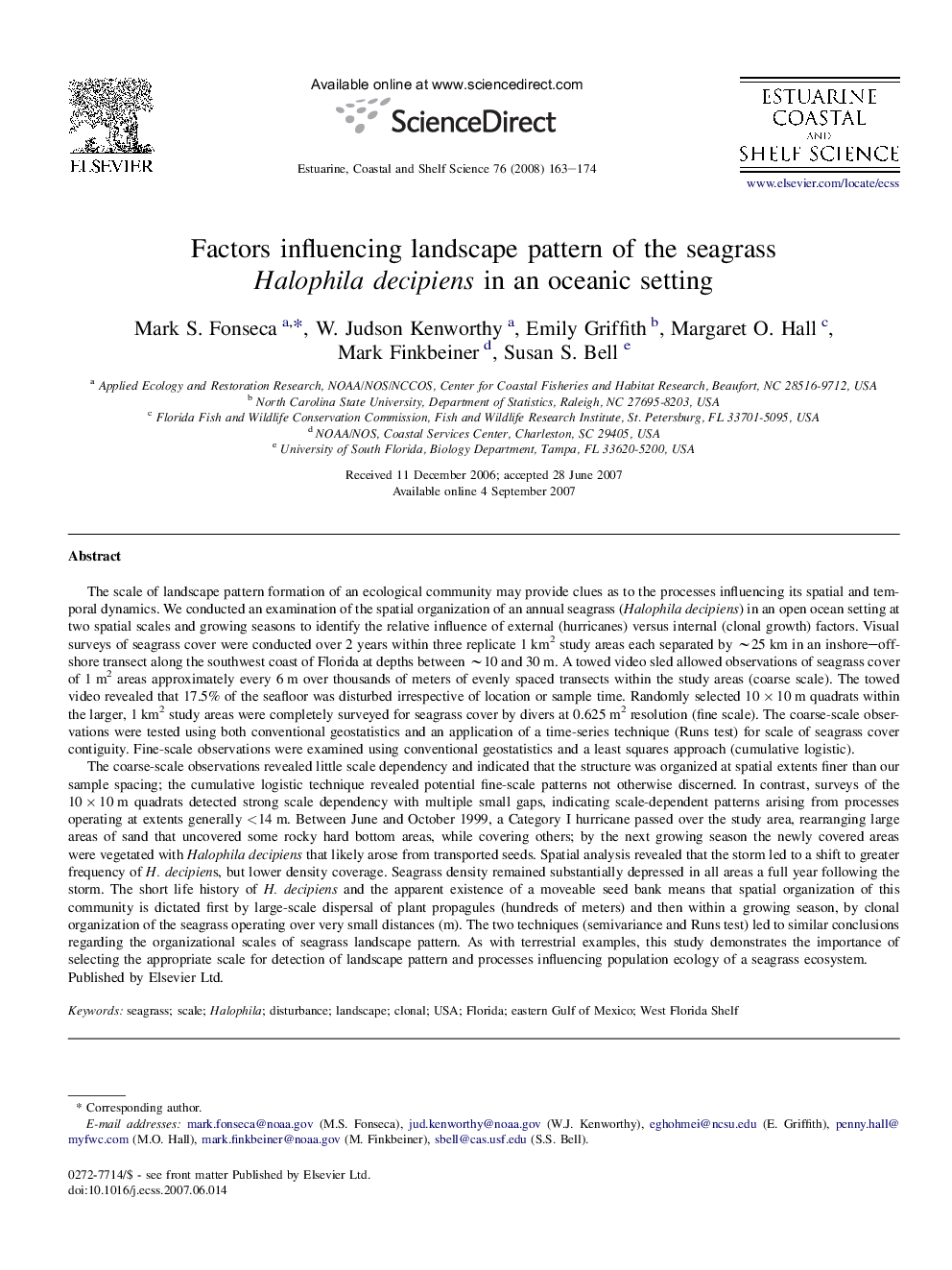| کد مقاله | کد نشریه | سال انتشار | مقاله انگلیسی | نسخه تمام متن |
|---|---|---|---|---|
| 4542275 | 1326759 | 2008 | 12 صفحه PDF | دانلود رایگان |

The scale of landscape pattern formation of an ecological community may provide clues as to the processes influencing its spatial and temporal dynamics. We conducted an examination of the spatial organization of an annual seagrass (Halophila decipiens) in an open ocean setting at two spatial scales and growing seasons to identify the relative influence of external (hurricanes) versus internal (clonal growth) factors. Visual surveys of seagrass cover were conducted over 2 years within three replicate 1 km2 study areas each separated by ∼25 km in an inshore–offshore transect along the southwest coast of Florida at depths between ∼10 and 30 m. A towed video sled allowed observations of seagrass cover of 1 m2 areas approximately every 6 m over thousands of meters of evenly spaced transects within the study areas (coarse scale). The towed video revealed that 17.5% of the seafloor was disturbed irrespective of location or sample time. Randomly selected 10 × 10 m quadrats within the larger, 1 km2 study areas were completely surveyed for seagrass cover by divers at 0.625 m2 resolution (fine scale). The coarse-scale observations were tested using both conventional geostatistics and an application of a time-series technique (Runs test) for scale of seagrass cover contiguity. Fine-scale observations were examined using conventional geostatistics and a least squares approach (cumulative logistic).The coarse-scale observations revealed little scale dependency and indicated that the structure was organized at spatial extents finer than our sample spacing; the cumulative logistic technique revealed potential fine-scale patterns not otherwise discerned. In contrast, surveys of the 10 × 10 m quadrats detected strong scale dependency with multiple small gaps, indicating scale-dependent patterns arising from processes operating at extents generally <14 m. Between June and October 1999, a Category I hurricane passed over the study area, rearranging large areas of sand that uncovered some rocky hard bottom areas, while covering others; by the next growing season the newly covered areas were vegetated with Halophila decipiens that likely arose from transported seeds. Spatial analysis revealed that the storm led to a shift to greater frequency of H. decipiens, but lower density coverage. Seagrass density remained substantially depressed in all areas a full year following the storm. The short life history of H. decipiens and the apparent existence of a moveable seed bank means that spatial organization of this community is dictated first by large-scale dispersal of plant propagules (hundreds of meters) and then within a growing season, by clonal organization of the seagrass operating over very small distances (m). The two techniques (semivariance and Runs test) led to similar conclusions regarding the organizational scales of seagrass landscape pattern. As with terrestrial examples, this study demonstrates the importance of selecting the appropriate scale for detection of landscape pattern and processes influencing population ecology of a seagrass ecosystem.
Journal: Estuarine, Coastal and Shelf Science - Volume 76, Issue 1, 1 January 2008, Pages 163–174